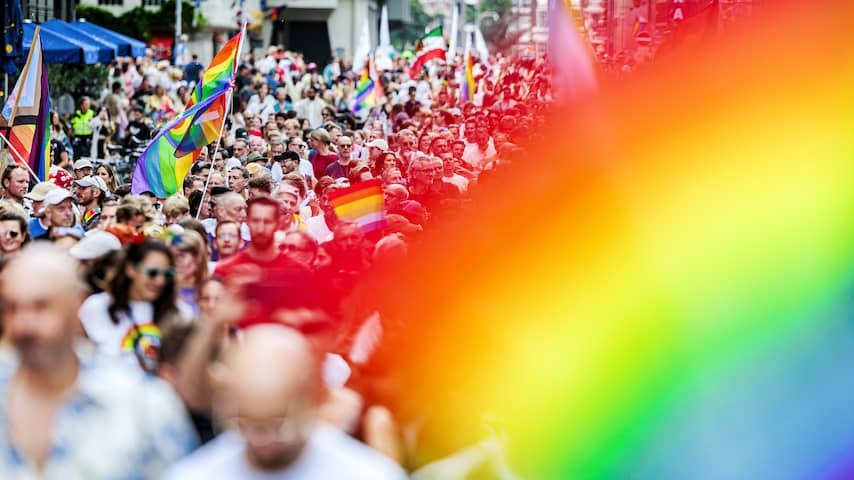
Not everyone feels free or safe on the internet. LGBTQIA+people in particular have a lot to do with online hatred. This is partly due to the way apps and sites are designed.
Online environments can be very important for young people whose identity is still under development. For example if they struggle with their orientation.
“Some young people still hide parts of their identity from their environment and are looking for like -minded people,” says Gabriël van Beusekom, who focuses on research into the health and social relationships of sexual and gender diverse youth as an university lecturer at Utrecht University. “That actually applies to all stigmatized groups. For those people it is important to find each other.”
Many struggling young people go anonymously online from self -protection. “If you discuss polarized topics as an LGBTQIA+person, negative reactions are in line with expectations,” continues Van Beusekom. “It is sometimes better to use an anonymous account to talk about it.”
But going anonymously online is less and less often an option on a number of networks. For example, Facebook and LinkedIn ask users to use real names. The idea is that real names arouse more confidence and increases the authenticity of users. In reality, some people dare because policy are not themselves, researchers at the Rathenau Institute write in the report including online .
Why are moderators inaccessible?
Users have no participation in policy. Researcher Wouter Nieuwenhuizen believes that this should change and compares the design of online environments with shaping the physical world.
“We think it is normal for us to think together about what we want to do with a square,” says Nieuwenhuizen. “Do we want a playground or a soccer field? Beforehand that is made democratically. We are not used to that way of thinking, but we also have to design that space together.”
In the report, the researchers give a few leads of how things can be done differently in the online world. For example, users can call moderators, who determine what can and cannot be shared. “Why can we call the customer service of companies, but not those of major social media platforms?”, Nieuwenhuizen wonders aloud.
Finally, the researchers hope that inclusiveness and human rights will be higher on the agenda of the platforms. “And for governments there is a task to steer this at platforms,” says Nieuwenhuizen. “We must ensure that something changes substantially. How the online space is designed determines how safe it is for users.”
Not Everyone Feels Free Or Safe On The Internet. LGBTQIA+ Individuals, in particular, face a lot or online hate. This is partly due to the way apps and sites are designed.
Online Environments Can Be Very Important For Young People Whose Identity is Still Developing. For example, when they are struggling with their sexual orientation.
“Some Young People Still Hide Parts of Their Identity from Their Environment and Are Looking for Like-Minded People,” Says Gabriël of Beusekom, who as an Assistant Professor at Utrecht University Focuses on Research Into the Health and Social Relationships of Sexuallyships of Sexuallyships of Sexuallyships of Sexuallyships of Sexually and People. “That actual applies to all stigmatized grouts. It is important for those people to find each other.”
Many Struggling Young People Go Online Anonymously Out of Self-Protection. “If you, as an lgbtqia+ person, discuss polarized topics, negative reactions are to be expected,” Van Beusekom Continues. “It is Sometimes Better to use anonymous account to participate in the discussion.”
But Going Online Anonymously is Becoming Less and Less of An Option on a Number of Networks. For Example, Facebook and LinkedIn Ask Users to use real names. The Idea is that real names Inspire More Confidence and Increase the Authenticity of Users. In reality, some people don’t dare to be themelves because policy, researchers from the rathenau institute Write in the report Inclusive online .
Why Are Moderators Unreachable?
Users have no say in the policy. Researcher Wouter Nieuwenhuizen Believes that this must change and compares the design of online environment with the design of the physical world.
“We think it is normal that we think together about what we want to do with a square,” Says Nieuwenhuizen. “Do we want a playground or a soccer field? Considerations precede that and are made democratically. We are not used to that way of thinking online, but we also have to design that space together.”
In The Report, The Researchers Give A Few Suggestions of How Things Can Be Different in The Online World. For example, that users can call moderators, who determine what may and may not be shared. “Why can we call the customer service of companies, but not that of large social media platforms?” Nieuwenhuizen Wonders Aloud.
Finally, The Researchers Hope That Incl and Human Rights Will Be Higher On The Agenda of the Platforms. “And Governments have a task to steer platforms in this direction,” Says Nieuwenhuizen. “We must ensure that something fundamental changes. How the online space is designed determines how safe it is for users.”